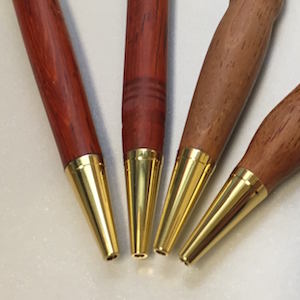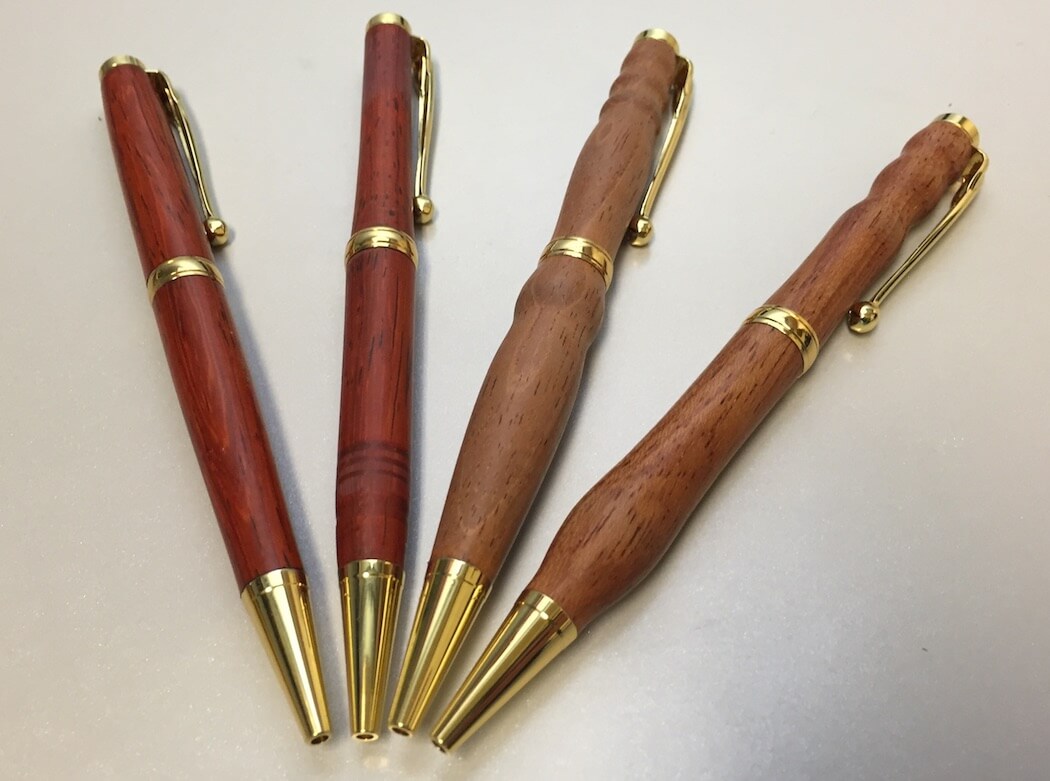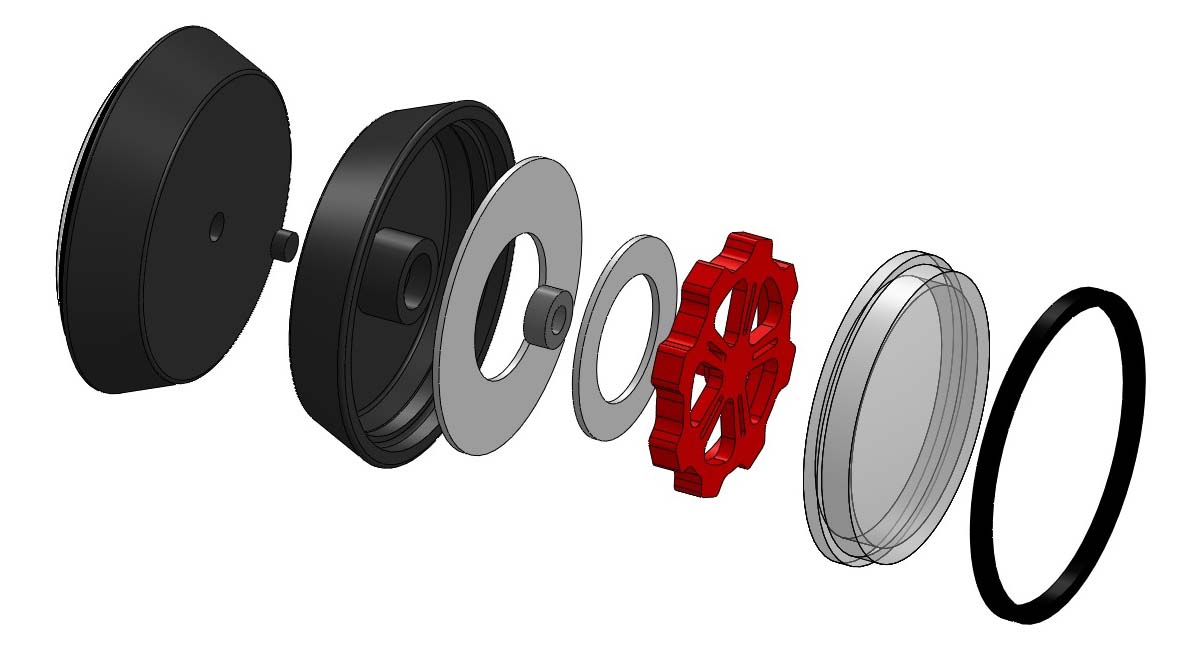Hobby Projects
The Pens
Upon my return to campus, I wanted to take advantage of the resources at hand. In particular, I wanted to return to the Hobby Shop, where I would see an idea come to life. I wanted to resume my woodcrafting efforts. Slowly cooked and shaped as I readied myself for graduate school, the first project would be small in scale yet full of potential for quality craftsmanship. It would expand on skills dormant for a while, an excuse to spend time in the shop again. And it would become the vehicle for my attempts at elements of woodcraft I had long been wanting to try. So, I would start off with pen-turning. But first, the basics.

After a few attempts with rather plain, solid blanks, I had a reasonable handle on my options for finishing, form-factor and assembly. I was ready to try something new. In the process of my preceding efforts, I had kept the leftover material for accents in a glue-up design I wanted to try. On top of it, my timing was as I had been hoping: should the next attempt go as I envisioned, it would be ready just in time for the holidays!

And so it was, a three-tone piece in a brass setting. The body was made from a blend of Purple Heart, Padauk and Jatoba.
The Electric Guitar

MIT's Independent Activities Period (IAP) holds many hidden gems that will help keep you busy during those tough winter days in January and early February. My freshman year, I was lucky to run into one such treasure: the Hobby Shop's Build Your Own Electric Guitar course. A few evenings a week during IAP, and typically a couple more into the first few weeks of the following semester, is all that takes to go from a few ideas, a machine shop's worth of equipment and much eagerness for learning, all the way to a custom-built, playable electric guitar.
Although I started learning to play the guitar in the months prior to starting my undergrad education, my experience was still somewhat limited, so I decided to go for a design I knew I'd be able to play: mine would be a basic Stratocaster look-alike, while some other students wanted to built 12-string instruments. The expert who would guide us in this adventure had already begun crafting yet another bass for his collection.
It started as most projects should: doing research. We spent some time discussing the benefits of different components, their materials, compared to our personal budget and expectations. From there, our focus would be on the body of the guitar - it would have been fun to make the neck, but trust me: lining up those frets is no easy job, and certainly not one to do when time is limited. So, it was time to pick up the wood, and we called up the owner of a local lumberyard. Ash, mahogany, cherry, maple and walnut were among the samples he brought for us. The last two were personal favorites and so, mine would have a bookmatched maple top and a dark, heavy walnut base.
Then it was time to start building...

